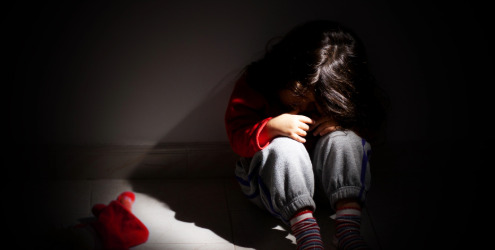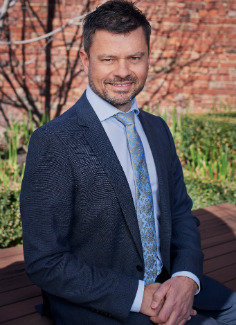Community
Copyright@ Australian Catholic University 1998-2025 | ABN 15 050 192 660 CRICOS registered provider: 00004G | PRV12008
Copyright@ Australian Catholic University 1998-2025 | ABN 15 050 192 660 CRICOS registered provider: 00004G | PRV12008

Three decades ago, when Daryl Higgins began investigating the impact of child sexual abuse in his first independent research as a postgraduate student, scientific knowledge of issues surrounding child maltreatment in Australia was scant and incomplete.
Though some progress had been made in explaining the effect of maltreatment on the health and wellbeing of young people, little was understood about the specific relationship between different forms of abuse and neglect.
“I was looking at a few factors that might help to explain the impacts of child sexual abuse, and that led me to explore a range of other family adversities,” says Professor Higgins, a registered psychologist.
He went on to pursue a PhD on this topic, pioneering the concept of “multi-type maltreatment” and presenting evidence that those who had experienced one of the five types of child maltreatment – sexual, physical or emotional abuse, neglect, or exposure to domestic violence – had typically also experienced others.
It soon became widely recognised that regardless of the type of maltreatment a child had been exposed to, harms could accumulate. Vulnerable children therefore needed considered responses based on the likelihood they had faced more than one type of abuse or neglect.
“What I found was that these other adversities commonly co-occurred in those who had experienced child sexual abuse, and this co-occurrence had significant outcomes that could last well into adulthood,” says Professor Higgins, who completed his PhD in 1998.
“This really got me going on the path of exploring the interconnectedness of childhood maltreatment, investigating the effects of its prevalence and understanding the long-term impacts.”
Thirty years later, Professor Higgins is still on that path.
Since 2017, he has been the Director of ACU’s Institute of Child Protection Studies, a leading research centre aimed at enhancing outcomes for children and young people through quality research.
The field has developed considerably in the decades since Professor Higgins first began exploring child abuse impacts and prevention. And yet, in the wake of the Royal Commission into Institutional Responses to Child Sexual Abuse, it was clear that some knowledge gaps remained. Australian research on the prevalence of child abuse had largely been limited to small-scale, non-representative studies.
Experts in this space saw the opportunity to address the gaps.
“The data that we did have suggested that institutional child sexual abuse was just one part of a much broader problem, and that multi-type maltreatment was a real issue,” says Professor Higgins, who was part of a team of experts commissioned to deliver a scoping study for research into the prevalence of child abuse in Australia.
“My main role in that scoping process was to argue persuasively that to focus on just one form of abuse or neglect would bias our understanding, both of the nature of the problem through the community, and its associations with long-term outcomes.”
Any large-scale, representative prevalence study therefore needed to cover all five forms of child maltreatment, making it the first research in Australia to collect this important information.
In 2019, after a hefty grant application process and the approval of funding from the National Health and Medical Research Council and other organisations, the Australian Child Maltreatment Study (ACMS) commenced.
“We knew this would give us an unprecedented opportunity,” says Professor Higgins, one of 10 chief investigators for the ACMS, which was led by Professor Ben Mathews from the Queensland University of Technology.
“It would allow us to conduct rigorous research, generating representative data that government bodies and stakeholders could rely on to inform policy and implement reforms that reduce child abuse and neglect in Australia.”
From the outset, the team of experts working on the project understood that conducting research and publishing in academic journals would not alone bring the action required to prevent and respond to harms associated with child maltreatment.
Instead, they followed the principles of a public health approach, with a multi-pronged strategy to build awareness among many parts of society – government bodies, non-government organisations, other experts and the wider community – spurring them to co-own the problem and play a role in its prevention.
By the time the key findings were published as a special supplementary issue in the Medical Journal of Australia in April 2023, the team had already engaged diverse stakeholders through public presentations, confidential briefings, news articles, social media posts and a dedicated website.

This engagement was amplified after the launch. Between April 2023 and May 2024, the ACMS received almost 2800 media mentions internationally, equating to an impressive 1.2 billion readers, viewers or listeners. The research team also received a major award for "outstanding contribution to promoting child protection issues".
“I always knew this would be important data on an important issue, but if somebody had told me it would garner that level of engagement or interest, I would have been entirely shocked and disbelieving,” says Professor Higgins, who himself appeared in several television and radio interviews to discuss the study’s findings.
He points out, however, that while public awareness is important in helping to spread information about a particular issue, it doesn’t always equate to effective action.
“When we see shifts in attitudes towards a problem and more people wanting there to be a solution, it doesn’t mean they’re actually agreeable to implementing that solution,” he says. “Public awareness needs to be accompanied by public acceptability of a particular strategy, but also support for being able to implement it.”
Take, for example, the national campaign to reduce smoking in Australia.
Says Professor Higgins: “In that case, there was widespread acceptance that smoking causes lung cancer, and that created these negative attitudes towards smoking, but what followed was a raft of changes – smoking restrictions in public places, bans on advertising, plain packaging laws… and then, if you’re an individual who has a problem with smoking, you’ve got a quit line and access to GPs so you can easily get support. So, we’re not saying, ‘Hey, this is bad, full stop’, we’re taking an integrated approach that supports the implementation of a strategy, and saying, ‘Okay, here’s what you can do’.”
The Australian Child Maltreatment Study identified a high prevalence of most forms of child abuse and neglect, and found that this maltreatment had strong links with mental disorders and other health risks.
But the research also showed that past strategies employed to address these issues have not had the desired effect.
So, what are the next steps? How can the ACMS be used to prevent and reduce child abuse and neglect?
To take the findings forward, Professor Higgins believes Australia needs a new prevention-oriented movement. This requires a shift from solely responding after harm has occurred, towards a strategy that makes protecting children everybody’s problem.
“We need a greater focus on preventing child maltreatment from happening in the first place, and that requires greater involvement from those services who already see families – schools, healthcare and early childhood services – so the problem doesn’t just fall to one narrow niche group like the child protection sector… everyone does the heavy lifting,” he says.
“We need to get in at that early point when parents are most amenable to advice and support and foster the development of positive and non-violent parenting strategies, so as many children as possible grow up feeling loved and safe in their homes.”
As for his own response to the findings of the study, even after 30 years of exploring child abuse and neglect, Professor Higgins was shocked at the pervasiveness of the problem.
“We knew that maltreatment was going to be a common experience during childhood, but to find that 62.2 per cent of people had experienced abuse or neglect, it’s a really shocking statistic,” he says.
“This is a major challenge with many complexities, but we wouldn’t be doing this work if we didn’t think we have a chance at making a real impact and reversing the trend.”
Professor Daryl Higgins is Director of the Institute of Child Protection Studies. His research focuses on public health approaches to protecting children and child-safe organisational strategies.
You can read more about the research engagement and impact of the Australian Child Maltreatment study in his commentary article for the open access journal, Children Australia.

Copyright@ Australian Catholic University 1998-2025 | ABN 15 050 192 660 CRICOS registered provider: 00004G | PRV12008